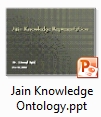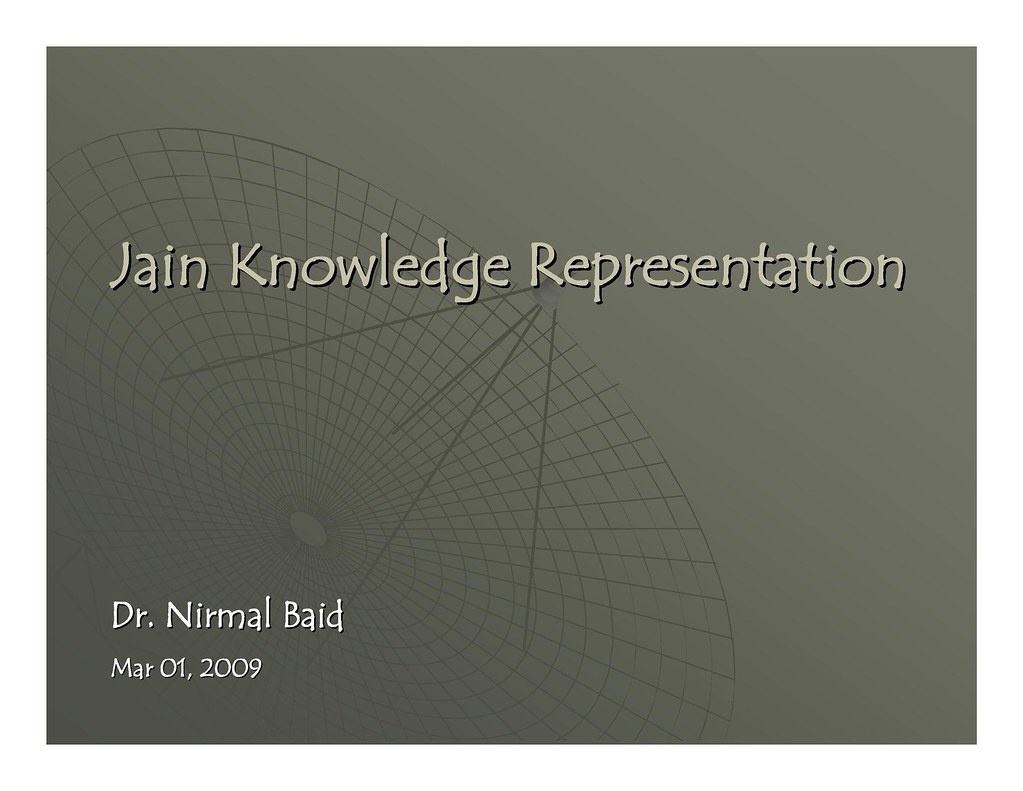 |
|
Jain Knowledge Representation
by
Dr. Nirmal Baid
|
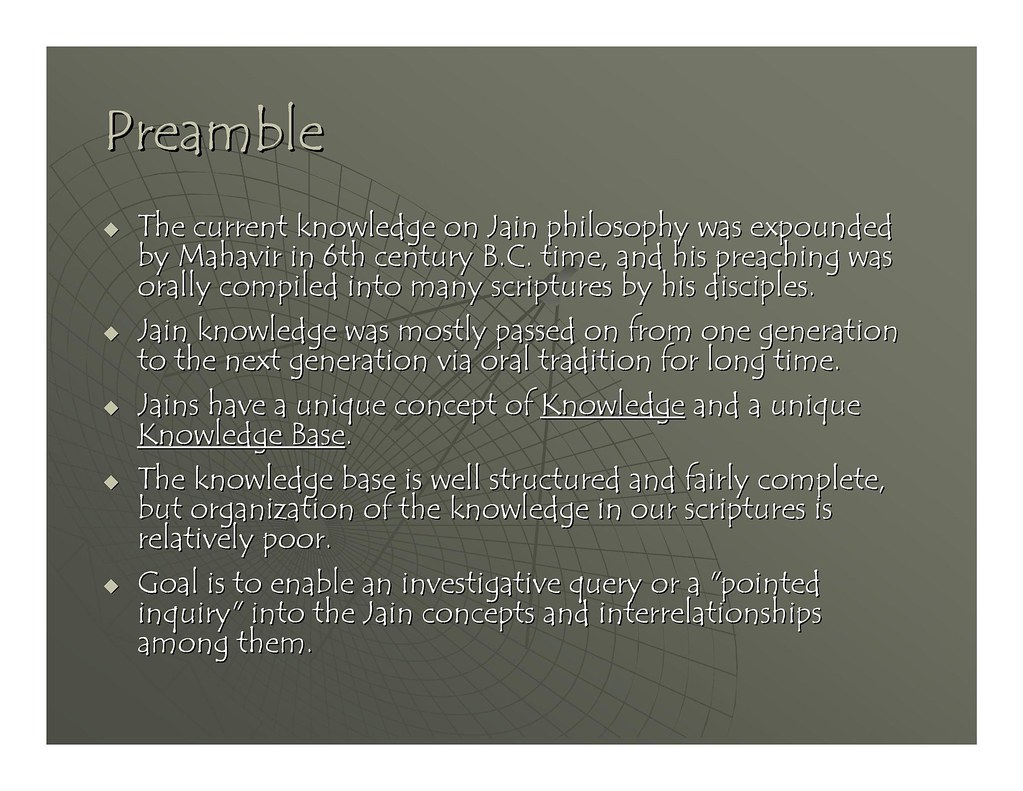 |
|
Preamble
-
The current knowledge on Jain philosophy was expounded by Mahavir in 6th century B.C. time, and his preaching was orally compiled into many scriptures by his disciples.
-
Jain knowledge was mostly passed on from one generation to the next generation via oral tradition for long time.
-
Jains have a unique concept of Knowledge and a unique Knowledge Base.
-
The knowledge base is well structured and fairly complete, but organization of the knowledge in our scriptures is relatively poor.
-
Goal is to enable an investigative query or a "pointed inquiry" into the Jain concepts and interrelationships among them.
|
 |
|
Knowledge Treatment
|
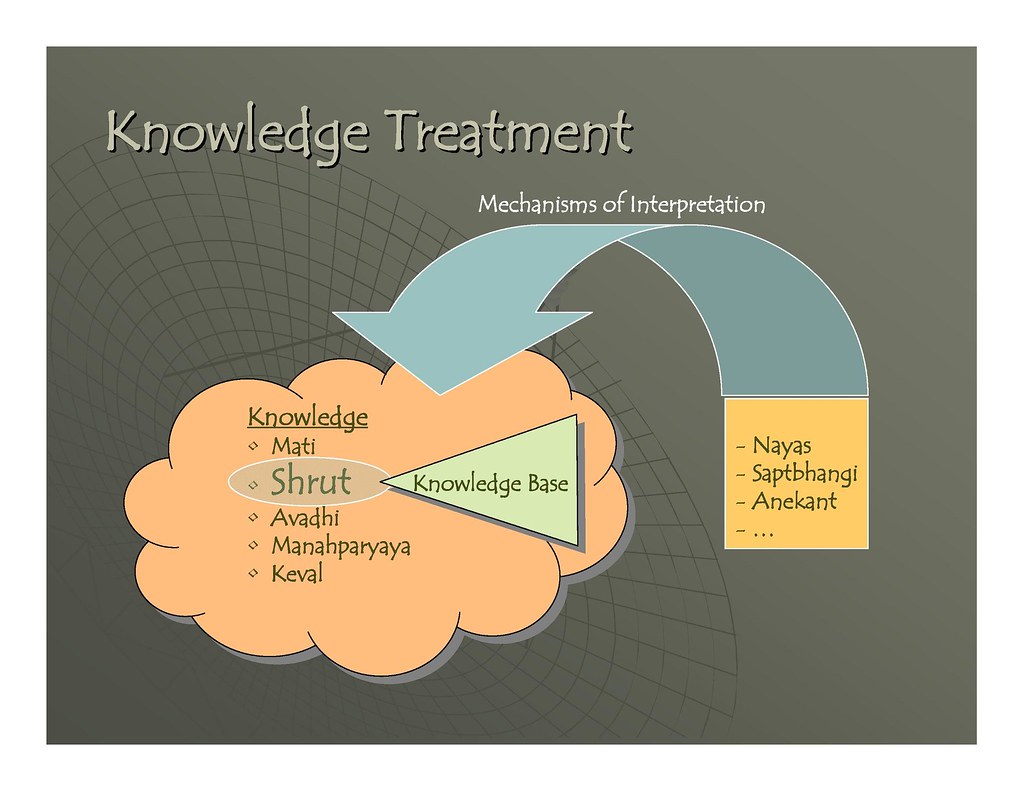 |
|
Knowledge Treatment
-
Matiis that form of knowledge by which a Soul acquires knowledge about an object through the sense organs. It is the intellectual knowledge, derived from the peripheral contact of the senses with their objects.
-
Shrutis the clear knowledge formed on the verbal communication from the Kevali, or, the Omniscient. It is clear knowledge derived from the study of scriptures, books or from the interpretation of symbols, which is documented utilizing the word of the Kevalis. According to knowledge traditions of the Jains, all of the perfect knowledge is attainable through the study of entire set of scriptures, some of which are deemed irrecoverably lost for the present times. Such a personality would be called Shrut-kevali.
-
Avadhiis the knowledge in the form of recognition of particular physical occurrences that happened in some other time. It is the determinative knowledge of events and incidents taking place somewhere beyond the range of sense-perceptions.
-
Manaparyayais the knowledge of what is in others' thought, originating as it does.
-
Kevalis the pure unimpeded knowledge. It is characterized by omniscience, transcending all relativity of discursive thought involving the idea of succession and series. This may be referred as 'Intuition' knowledge, meaning, what we get by a single stroke of cognition, unadulterated by any of the process of representation. The worldly beings, conditioned naturally by the relativity of thought, cannot have this sort of cognition.
|
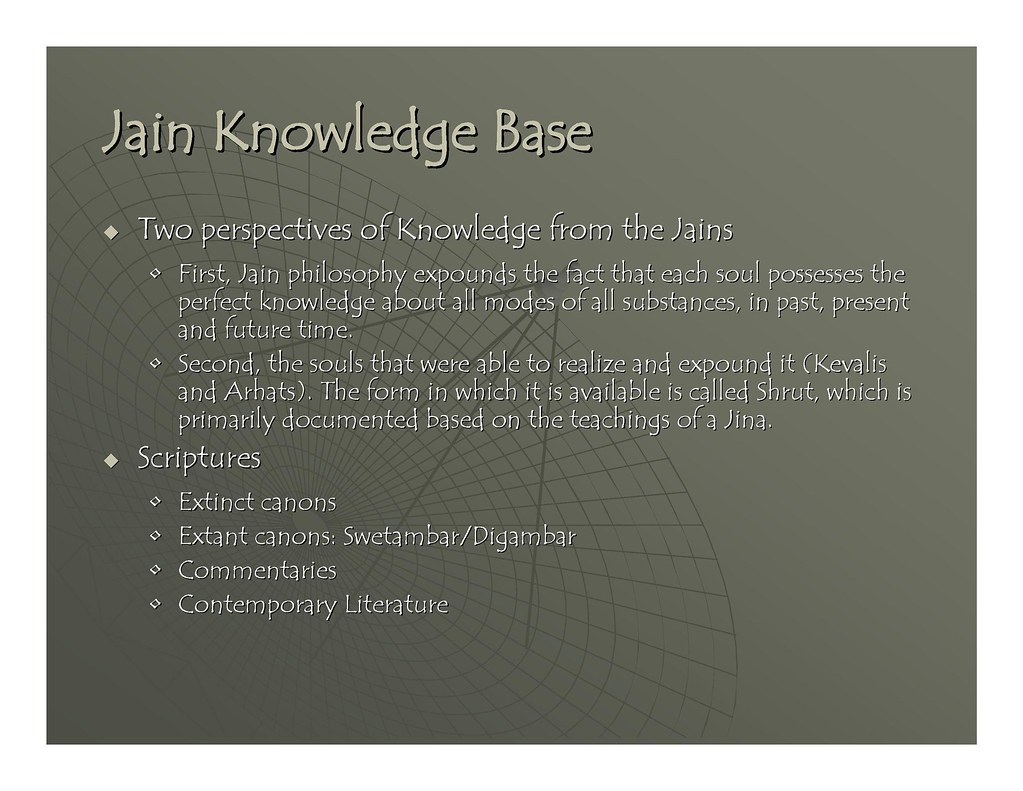 |
|
Jain Knowledge Base
- Two perspectives of Knowledge from the Jains
- First, Jain philosophy expounds the fact that each soul possesses the perfect knowledge about all modes of all substances, in past, present and future time.
- Second, the souls that were able to realize and expound it (Kevalis and Arhats). The form in which it is available is called Shrut, which is primarily documented based on the teachings of a Jina.
- Scriptures
- Extinct canons
- Extant canons: Swetambar/Digambar
- Commentaries
- Contemporary Literature
|
 |
|
Knowledge Representation Styles
-
Early scholars, starting from the Gandharas, used the language of the commons
-
Descriptive Sutra Style: Brevity of expression was one of the key characteristics of the sutras as these had to contain entire taxonomies.
“Chattari atthikaya ajivakaya pannatatam jaha, dhammathikaye, adhammathikaye, aagasatthikaye, poggalatthikaye” (Sthanang 4/1/251) also in (Bhagvati Sutra - 7/18/305)
“Naanass Dansnass y aavaranam Veyaniymohaniyanam, Aaugnaamam Godantaraaymidi Atthpayadiyo” (Gommatsaar Karmkand - I/8)
-
Q&A Style: Aka Prashnottar Padhdhati
“Kaivihanam Bhante! Davva Pannatta?
Goyama! Duviha Pannatta, Tam Jaha - Jivdavva y Ajivdavva y” (Anuyogdwar 141)
-
Concise Sanskrit Sutras: Concise composition of the sutras helped in easy memorization, and hence helped in preservation of the critical knowledge base.
“Ajivakaya dharmadharmakasha-pudgalah” (Tattvarth Sutra 5/1)
-
Dictionary:
Abhidhan Rajendra Kosh (1890) - 60000 terms (Prakrit to Sanskrit)
Jainendra Siddhant Kosh (1944) - 21000 topics (Prakrit/Hindi to Hindi)
-
Regional Styles: e.g., Rajasthani Thokdas and Gujarati Tabbas
-
The main composition style used by these scholars helped in maintaining an unambiguous meaning of the critical concepts.
|
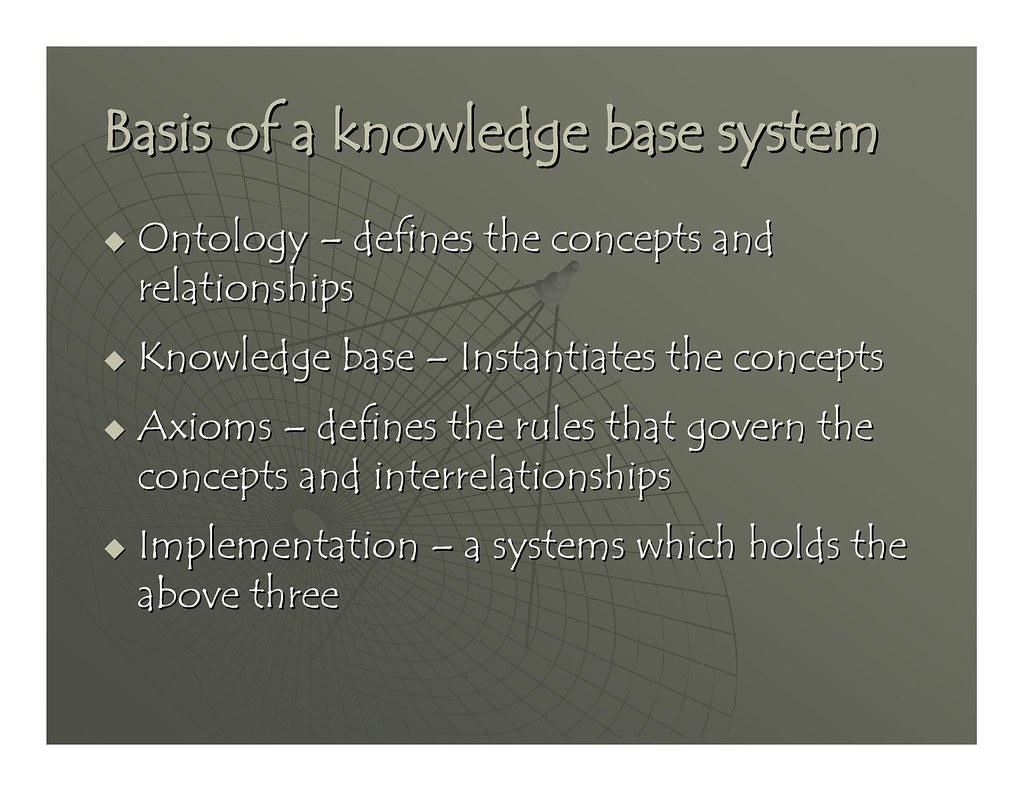 |
|
Basis of a knowledge base system
- Ontology - defines the concepts and relationships
- Knowledge base - Instantiates the concepts
- Axioms - defines the rules that govern the concepts and interrelationships
- Implementation - a systems which holds the above three
|
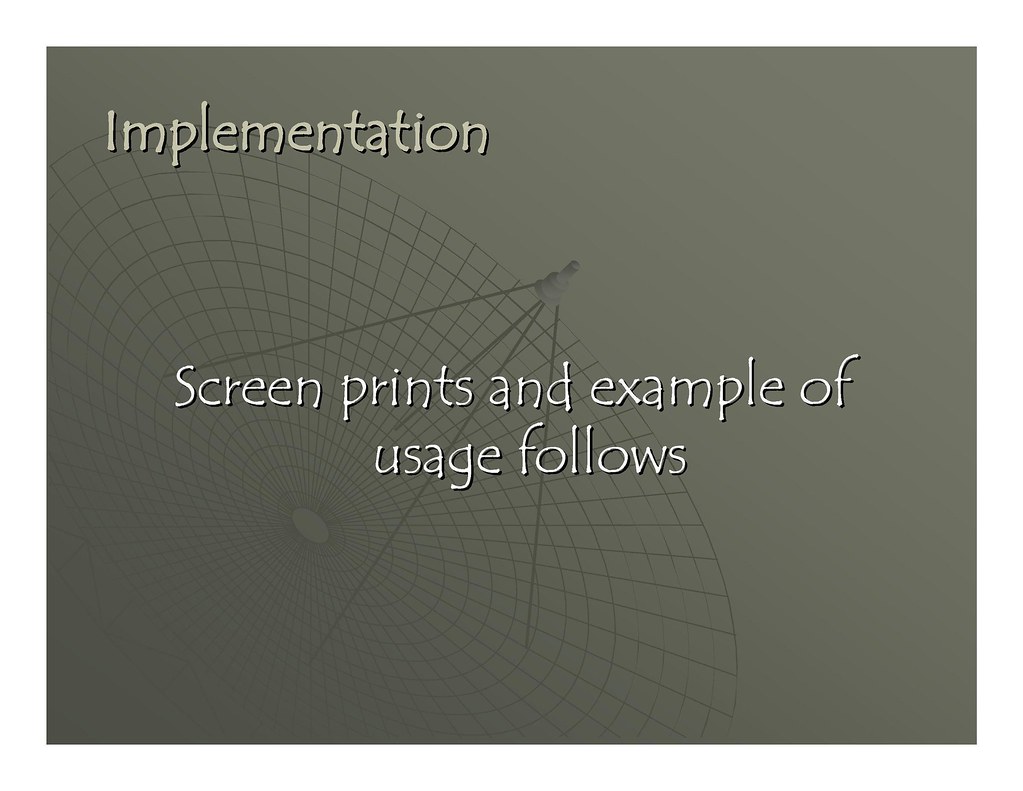 |
|
Implementation
Screen prints and example of usage follows
|
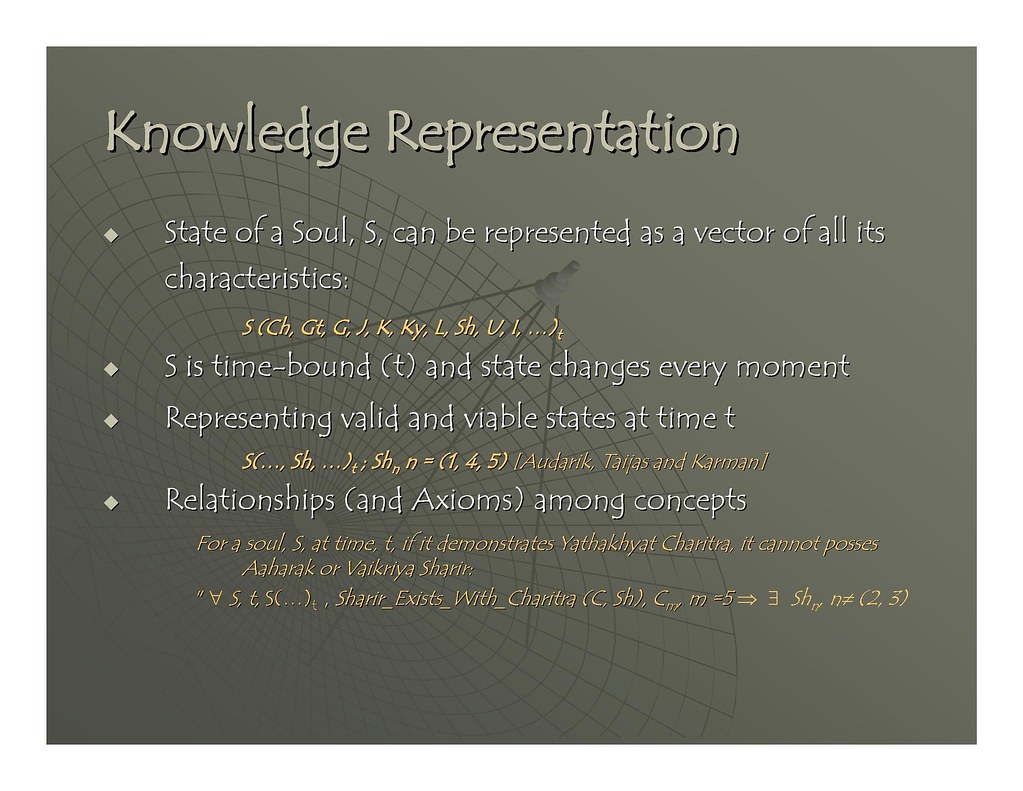 |
|
Knowledge Representation
- State of a Soul, S, can be represented as a vector of all its characteristics:
S (Ch, Gt, G, J, K, Ky, L, Sh, U, I, …)t
- S is time-bound (t) and state changes every moment
- Representing valid and viable states at time t
S(…, Sh, …)t; Shn n = (1, 4, 5) [Audarik, Taijas and Karman
- Relationships (and Axioms) among concepts
For a soul, S, at time, t, if it demonstrates Yathakhyat Charitra, it cannot posses Aaharak or Vaikriya Sharir:
" " S, t, S(…)t, Sharir_Exists_With_Charitra (C, Sh), Cm, m =5 Þ $ Shn, n¹ (2, 3)
|
 |
|
Top-level Hierarchy |
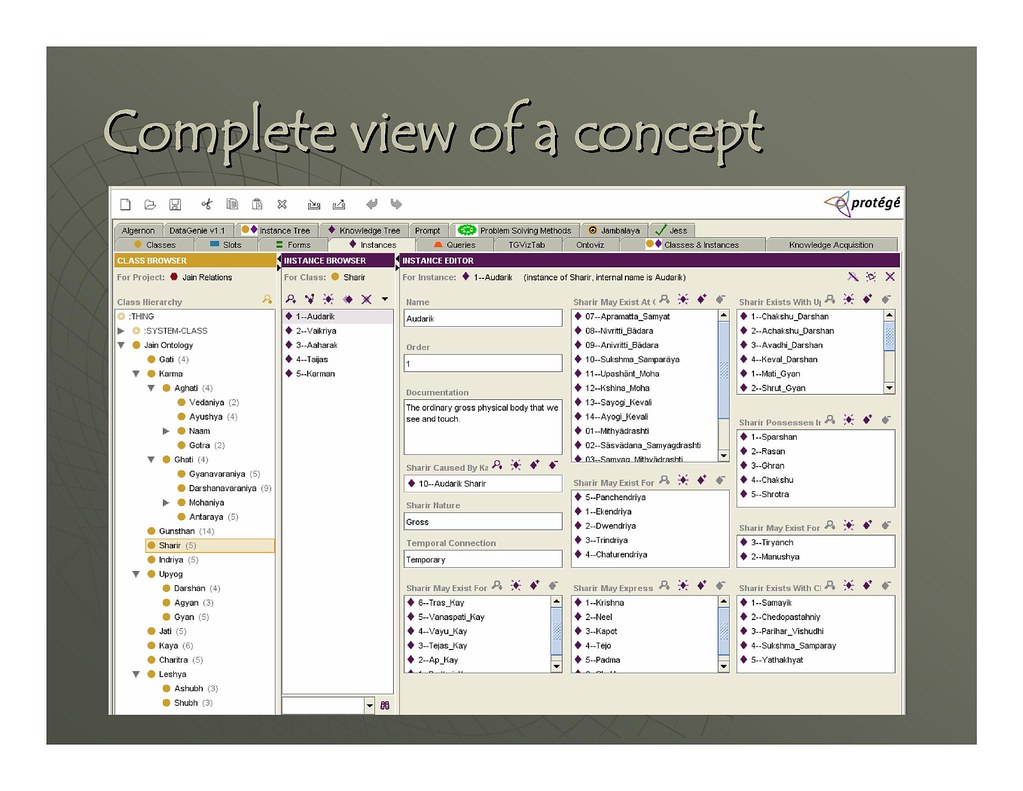 |
|
Complete view of a concept |
 |
|
Relationship View |
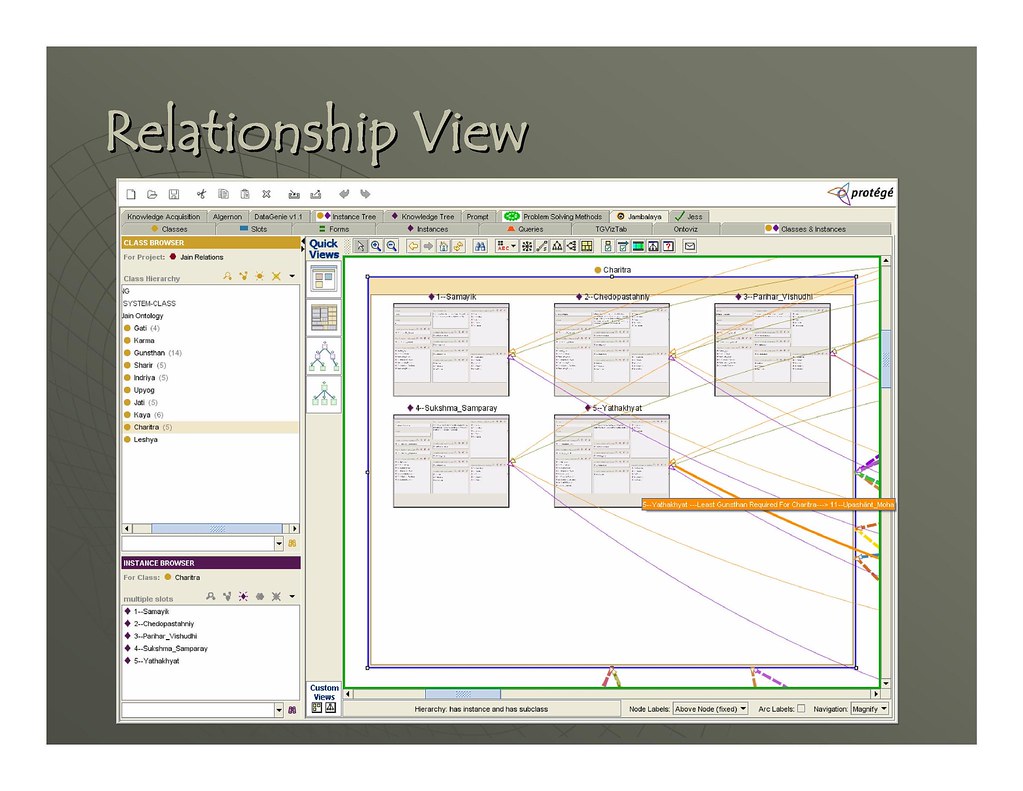 |
|
Relationship View |
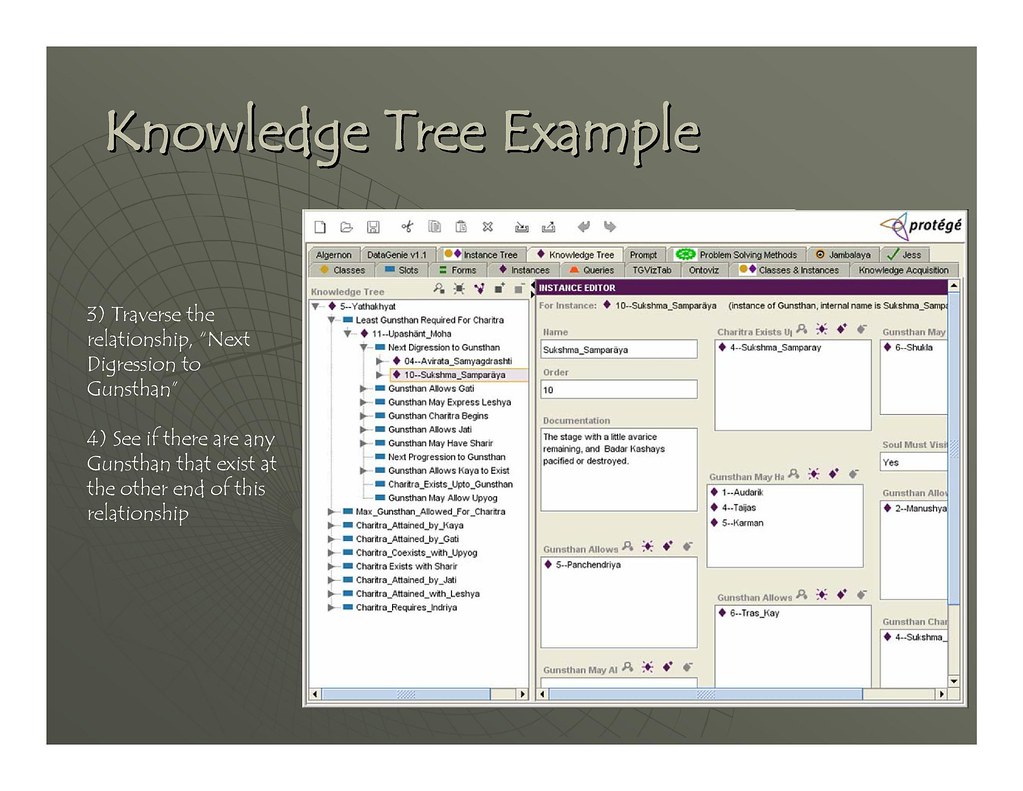 |
|
Knowledge Tree Example |
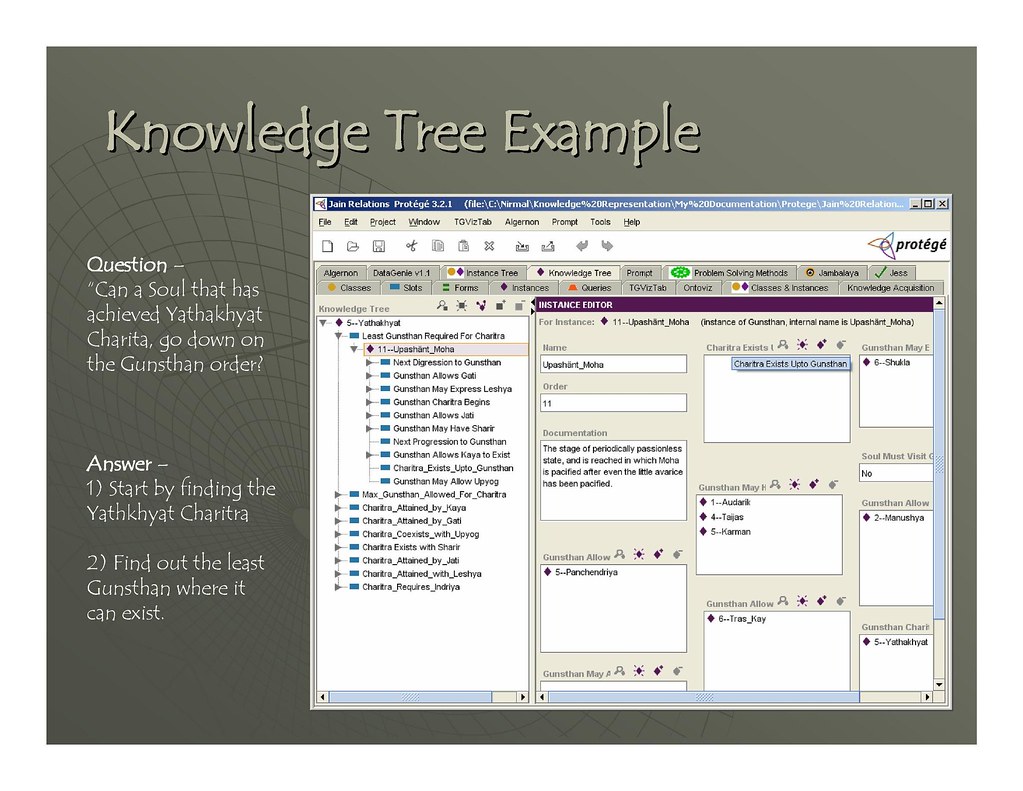 |
|
Knowledge Tree Example |
 |
|
HTML Rendering for Web Sharing |
 |
|
Thank you
Contact:
415 559 3191
|

















 Dr. Nirmal Baid
Dr. Nirmal Baid
 Dr. Nirmal Baid
Dr. Nirmal Baid
